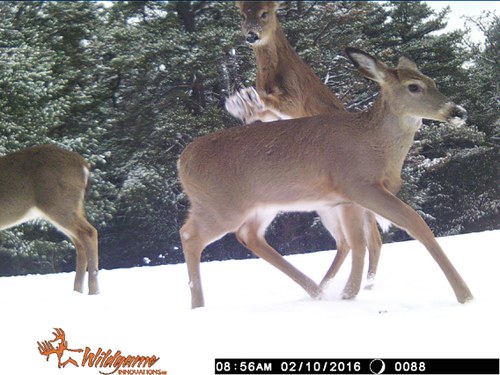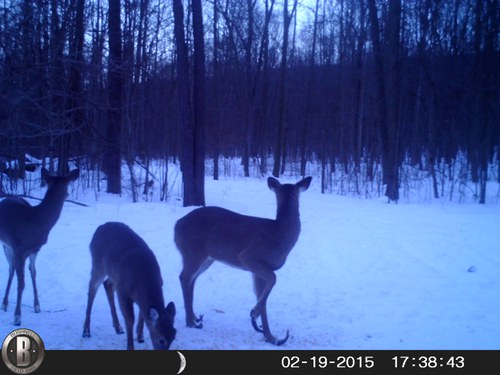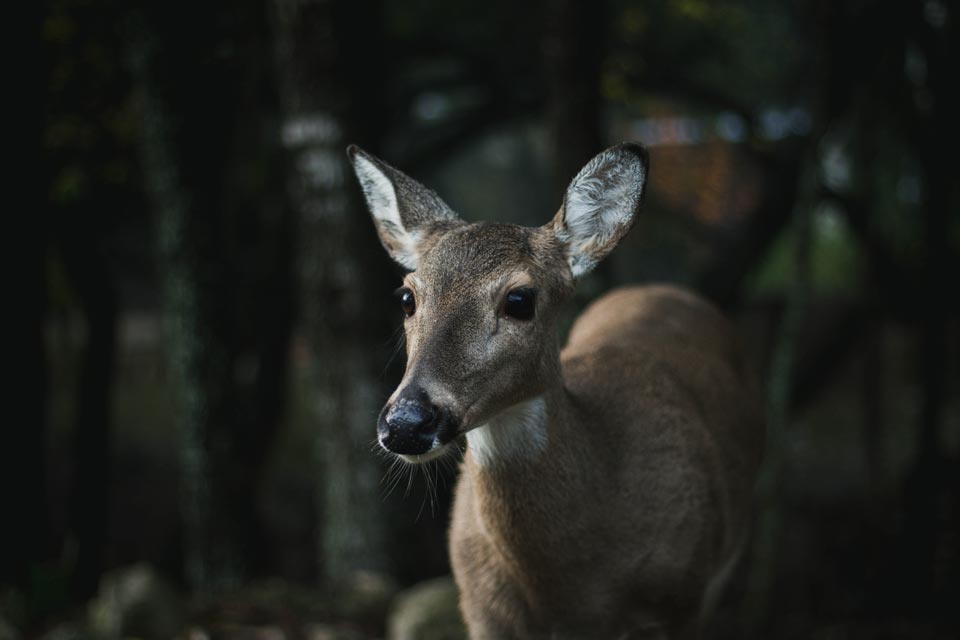For scientists, trail cameras are great. They tell us what’s going on when the deer think we aren’t there. We use them to watch nets and traps and catch a glimpse of study animals.
Sometimes a spy tells us things we don’t like to hear. Other times you can’t believe a word (or image) it says.
A trail camera photo snapped on one of our study sites reminded us of the former and prompted this post.
When conducting research, we are walking a fine line. Our actions can be invasive, such as ear-tagging and attaching radio-collars, but we try to minimize the effects of these actions because we want naturally behaving deer upon release.
However, before we can tag them, we have to capture them. And before we capture them, we have to get them to a trap. And to get them in a trap, we have to sweeten the deal. Hence, bait.
Make no mistake feeding deer is bad. It is no secret that we use bait to lure deer into Clover traps and to rocket nets. We even receive inquiries about what bait to use to attract deer to game cameras.
Here are 4 reasons why you shouldn’t feed or bait.
1. This photo clearly displays one of the reasons why feeding is bad. Competition that comes with crowding at feeding sites leads to increased fighting and aggression. This increases stress which weakens immune systems and opens the door for diseases that would otherwise be kept at bay.

2. Disease transmission is the primary concern with regard to feeding. And while Chronic Wasting Disease is the one we are all most worried about, there are other more common nasties that lurk about and more readily shared among deer when they feed at bait:
• Virus and bacterial disease, like rabies, salmonellosis, toxoplasmosis,
• Parasites, like lungworms and tapeworms.
3. Imbalances in the diet leading to physiological problems. Eating corn causes acidosis in the rumen – even the small amounts that we use as bait cause mild acidosis! The rumen of a deer is very sensitive and the organisms that help a deer digest its food are affected by the pH of the rumen. Feeding deer can also cause foundering – the same disease that occurs in domestic ungulates (see photo below). This is an extremely painful disease caused by a diet high in carbohydrates (like bait!).

4. Some folks use game cameras to monitor the deer on their property. Using bait to attract deer to your cameras can bias the information you collect. For example, are you trying to monitor recruitment (fawn:doe ratios) on your property? By feeding you are less likely to get pictures of sub-dominant deer (usually fawns) because they will be excluded from the bait pile (and your camera).
So if you are trying to estimate the fawn:doe ratio or adult sex ratio… don’t use bait!
If you care about the health of your deer… don’t use bait!
Just like spies that sometimes feed you false or flawed information, game camera photos in front of bait need a critical eye when viewed.
Knowing feeding deer is bad, baiting used as part of research or capture situations is of short duration and in small amounts. As you can read from the Deer Crew Diaries, bait sites and traps are moved regularly. We try to minimize deer becoming accustomed to a free meal and its associated downfalls.
So thanks game cameras, the 007 of the wildlife field, for your excellent surveillance and intel. We’ll take it from here.
-Duane Diefenbach and Jeannine Fleegle
